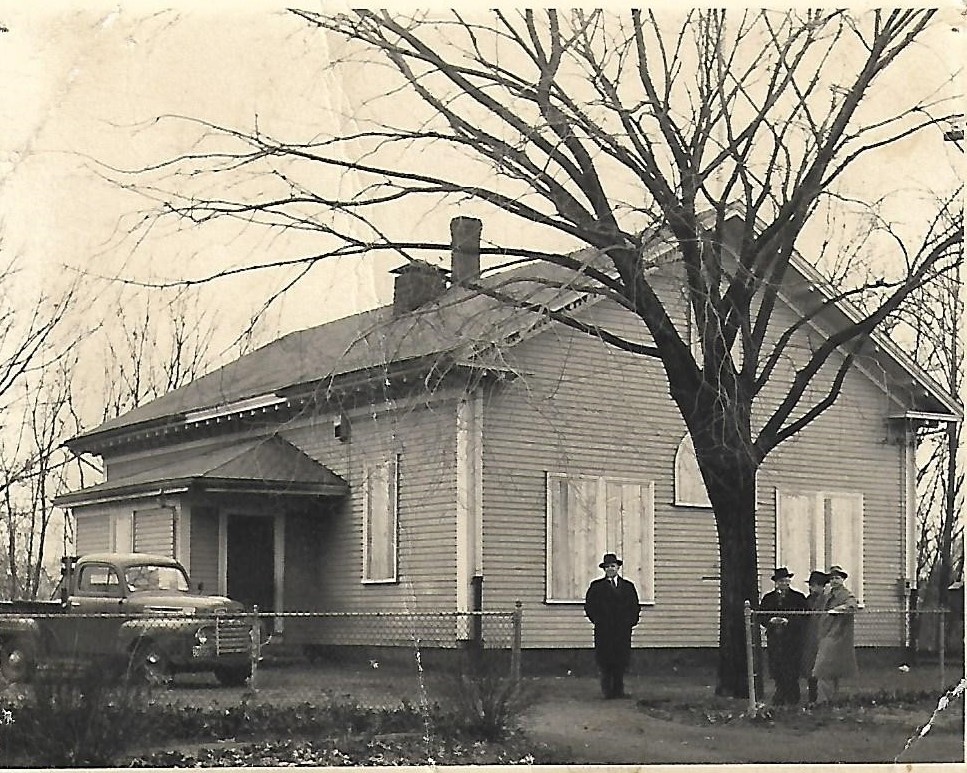The Hill End School was built in 1853. The 1854 school committee report for District No. 1 described its’ beginnings: There has been a beautiful school-house erected in this district in the last season which seems to act as a kind of stimulant upon both parents and children. There seems to be a happy sparkle in the eyes of the little ones when spoken to about their new school-house …. sufficient to seat 80 scholars with room for putting desks for some 20 more … contains an excellent recitation room … small school room, and also another room extending over the recitation room … entry sufficiently large for a primary room when needed … very neat in its appearance and … together with the convenient outhouses, seems to mark this as the Model District School House. We understand the cost, including the bell, land and grading, was about twenty -six or twenty-seven hundred dollars.
It was named the Walnut Street Schoolhouse in 1865 when the district system was change to town wide school system. It sat on what became Mayall Park – now Leach Park named after Earnest H. Leach the first Reading boy killed in 1918 in WWI. The park is the triangle of grass just down the street from QP – bordered by Hopkins Street, Summer Ave and Walnut Street. Over the years the town used the granite the school sat on for street gravel. There was a letter to the Chronicle that said that the hill the school was built on had been cut away so much for the gravel that to get at the school house the children were obliged to climb like alpine goats up the steep bank. One report said the precipitous bank went from 3 to 13 feet!
A proposal was made to move the school by Mr. Mayall in 1881. His home was across the street from the “distasteful’ Walnut Street School. The discussions on Mayall’s proposal ensued in the town of Reading until 1883 when the proposal finally carried. The school was moved just down the street during the summer vacation break to 55 Hopkins Street where it remains. Mr. Mayall paid for moving the school, some of the required school renovations, the triangle of land left and its’ transformation into what became Mayall Park! The school was officially renamed as the Chestnut Hill School in 1844.
In 1930 there were 45 students enrolled in grades 1-4, a far cry from the 80 students in 1860. By 1944 as the student population continued to decrease, and the little 2-room schoolhouse became a discussion for the town again. The old building did not meet the current school standards. One report said: The teachers’ success is in spite of, rather than on account of, the building. The town discussed making it a dwelling or using it for a community house like the Northern Residents Association did for the old Hose House – now home of the Colonial Players, Reading’s other theatrical group.
It was sold to the Quannapowitt Players in 1950. The players used the building to build sets to take to local halls, store costumes and hold member meetings for the next 18 years. In 1960 the players decided to create a black box theater. With sweat equity they transformed the two rooms into one with raked seats from a local theater, looking down to the stage floor which is still used today! The first play was produced in the new Quannapowitt Players Theater in 1970 – The Man in the Dog Suit.
The Little Red Schoolhouse was Reading Public School until 1949 serving the community for 96 years and the Quannapowitt Players home since 1950.

